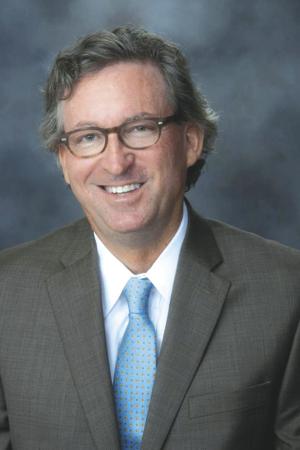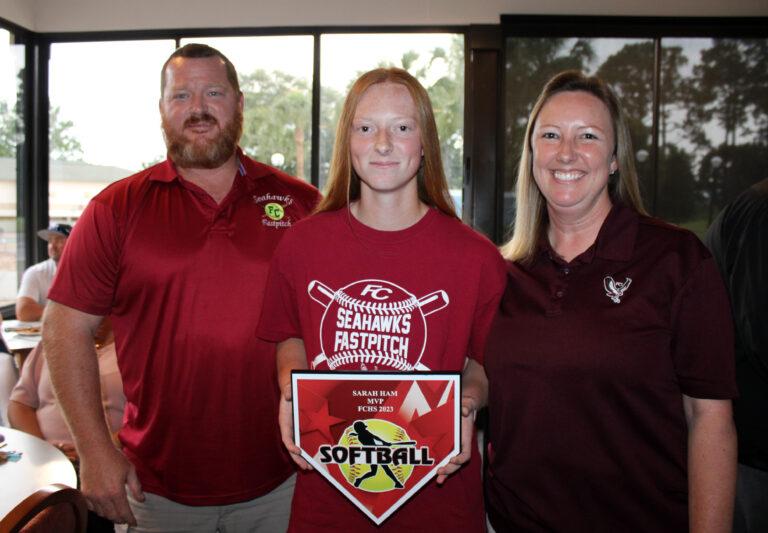Legacy Post Disclaimer
This is a #Legacy post imported from The Apalachicola Time’s previous platform. If you’re experiencing issues with this article, please email us at news@nevespublishing.com.
Chasing Shadows: Carrabelle becomes a town on Christmas Eve
Editor’s note: This is Part 1 of a two-part series on the founding of Carrabelle.
In 1877, a real estate developer from Minnesota named Oliver Hudson Kelley set up a tent on the east side of the river where the Crooked and New Rivers joined and emptied into Apalachicola Sound. He moved in his wife and four daughters and declared himself the mayor. He began immediately to organize a community named “Rio Carrabella.”
Kelley used his Masonic and Grange connections to meet local businessmen and landowners and to recruit wealthy Yankees in the lumber and the railroad businesses to move to James Island in Franklin County. He became a regular correspondent for the Weekly Floridian newspaper, published every two weeks in Tallahassee, where he posted his” James Island Letters” touting the excellent virtues of St. James Island where Carrabelle is located. He extolled the virtues of such an amazing place with a natural deep-water river, easy access to the Gulf of Mexico, an inexhaustible virgin forest, and rich fertile soil, with oil and minerals in abundance. In a remarkable statement he even claimed that there were no mosquitoes, only an occasional flea!
By 1880, leaders of the growing community organized preliminary meetings, drafted a petition to Franklin County to create a town and held an election. Nineteen local residents who were registered voters signed the incorporation petition and sent it to the county. This petition established the legal city boundaries which included Dog Island and Blocker Island (now known as Timber Island) and outlined the local government structure. The incorporation of Carrabelle was officially recorded on Christmas Eve in 1881 by the Franklin County Clerk of the Court, so on that date Carrabelle officially became a town with its present name.
In the election, the Carrabelle citizens choose O. H. Kelley as president of council (what would now be called mayor), W. H. Baxter as clerk or secretary of the town, J. R. Blocker as treasurer, F. L. Reynolds as marshal and five councilmen – Charles Reynolds, J. W. Lynch, Leroy Allen, R. F. Fowler, and William Van Dyke.
Who were these men and what were their roles? The 19 other founding fathers were a diverse group. Five were transplanted Yankees with money, mostly experienced lumbermen who were acquainted with Kelley. Four of them became mill owners in Carrabelle. Fifteen of these men were neighbors, living in the area surrounding the sawmill on the Carrabelle River (around the current Fourth Street boat ramp area) at the time of the 1880 census. They were father-son duos, brothers, cousins, friends, former slaves and former slaveowners. Most of them worked in jobs related to the lumber industry. They went to church. Several of them were Masons. According to the federal Census in 1880, many of these families lived in Apalachicola. The men moved to “Rio Carrabella” to work in the sawmill and prepare a home for their families to move to the east side of the Franklin County.
Oliver Hudson Kelley, age 55 when the petition was signed, was born in Boston, Massachusetts. He was a farmer, entrepreneur and real estate developer who came to Franklin County from Minnesota in the 1870s. He was well-known for organizing Midwestern farmers into the national organization, the Patrons of Husbandry, often called The Grange. He visited Franklin County and found St. James Island ripe with potential for development, with its virgin forest, natural deep-water river and easy access to the Gulf through East Pass between Dog Island and St. George Island.
Kelley used his membership in the Masonic fraternity to open doors that would have been otherwise closed to a northern Yankee during Reconstruction in the South. He had money and land was cheap, often going for 50 cents to $1 an acre. He became friends with Benjamin Curtis in Wakulla County, a representative of the Apalachicola Land Company which was actively selling all of Franklin County and the surrounding area. Kelley purchased several tracts of land including the acres on James Island that later became Kelley’s Plat in Carrabelle. His wife, Temperance Baldwin Lane, age 53, was also born in Boston, and the couple had four daughters, Julia, Frances, Grace and Garaphelia. Kelley’s niece, Caroline A. Hall, was his business colleague who later became important to the development of Carrabelle.
J. R. Blocker was age 38 when he was elected treasurer of the town. He was a schoolteacher, a local Civil War veteran renowned for his skill as a blockade runner and the son of the noted Confederate commander of the Beauregard Rangers, Haley Talbot Blocker of Tallahassee. His Masonic membership began in the Carrabelle Lodge. Later he became city clerk and eventually a member of the Florida House of Representatives who sponsored two bills important to Carrabelle. – one to charter the City of Carrabelle to make it more autonomous, and the second to move the Dog Island Lighthouse to the mainland in Carrabelle on Crooked River. After passing those bills, Blocker resigned from the Legislature and became the US Customs Agent in Apalachicola.
Three of the original town founders were Black men who were emancipated slaves from Wakulla County seeking a better job opportunity working at the sawmill.
Abraham Allen, age 62, was married to Jane Allen, age 43. They were both born in Barnwell County, South Carolina on the Sarah Elizabeth Bryan Allen family plantation which Union Gen. William Tecumseh Sherman’s Army burned down. Their daughter, Laura, later Wiggins, became a beloved mid-wife in Carrabelle at the turn of the century. Abraham was a skilled carpenter able to read write and cipher. He moved to Fort Braden in 1852. In 1853 he then moved to live on the Allen family plantation in Walker Community, in Wakulla County. He later moved to Carrabelle in 1881 to work with the Allen men at the sawmill where his skills were highly prized.
George Gilmore was a 34-year-old laborer and carpenter born in the state of Florida, his wife a 37-year-old woman also born in Florida. They had 12 children but only six lived, according to the 1900 Census. Their oldest daughter Charlotte married Henry Allen in Carrabelle. Their fourth child, Robert Taylor, became a schoolteacher in Marianna and their youngest daughter Rachael was a schoolteacher in Miami.
Henry Simmons, the third Black man, was a carpenter born in 1839, making him 42 years old when he signed the Carrabelle petition to incorporate. He and his wife, Frances Simmons, age 37, were both born in Apalachicola.
Leroy Allen was born Oct 30, 1827 on Orange Mock Grove plantation in Barnwell County, South Carolina. He married Jane Ann Hayes, also from Barnwell County, in South Carolina. They had 13 children, 10 lived, three died young. Their last child was born in Apalachicola. Leroy was well-educated, a surveyor of land, who ran his parent’s plantations in South Carolina and Florida. He was an educator and a member of the Masonic fraternity. Contrary to the traditional norms of the day, he taught the Allen’s slave families how to read, write and do basic mathematics.
He was a Civil War veteran starting as a 3rd Corporal, joined Company C, 5th Florida Infantry. He survived many major battles in Pennsylvania including Gettysburg. In Virginia, he fought in the Second Battle of Bull Run, Antietam, Chancellorsville and others. He was wounded and captured in 1865 and spent the end of the Civil War in a prisoner of war camp for officers at Johnson Island, Ohio. On June 18, 1865, he was released after an oath to become a United States citizen.
When Allen had left for the war, he and his good friend pledged to not cut their hair until they saw one another again. His friend was killed and Leroy never cut his hair for the rest of his life. He returned to Florida. then moved to Apalachicola in 1876. He was 54 when he signed the incorporation petition and was working as a mill wright at the lumbermill in Carrabelle.
One of Allen’s sons, J. A. (Joseph Anderson) Allen, was born in 1850 at his grandparent’s plantation in South Carolina. A member of the Masonic Society, he became a carpenter/laborer at the sawmill in Carrabelle. At age 31, he signed the town’s Incorporation petition. In 1881, he married 23-year-old Eliza J. Barber, who was from Thomasville, Thomas County, Georgia. They had five children, one died early. J.A. Allen died young of wasting sickness in 1891; his wife is buried in Magnolia Cemetery in Apalachicola.
The Leroy and J.A. Allen family is one of the few of the signers of the original petition who have lived in Carrabelle continually since that time until today.
James H. Calhoun, born in Quincy, Gadsden County, was a 37-year-old engineer when he signed the petition. His wife Martha J. Long was born in Marion County, South Carolina. George Hardee Carraway was a 29-year-old log man and laborer at the sawmill. He was born in Calhoun County, and married Sarah J. (Sallie) Meacham from Georgia.
The Carrabelle History Museum would like to thank their amazing researchers: Mark Curenton and the Apalachicola Area Historical Society; Terrance Davidson, a direct descendent to Carrabelle’s original Allen Family; Meg Magnan; and Sheri Wesson. Photo credits from the Memory Project, Florida Department of State, Findagrave.com.
This article originally appeared on The Apalachicola Times: Chasing Shadows: Carrabelle becomes a town on Christmas Eve




Meet the Editor
David Adlerstein, The Apalachicola Times’ digital editor, started with the news outlet in January 2002 as a reporter.
Prior to then, David Adlerstein began as a newspaperman with a small Boston weekly, after graduating magna cum laude from Brandeis University in Waltham, Massachusetts. He later edited the weekly Bellville Times, and as business reporter for the daily Marion Star, both not far from his hometown of Columbus, Ohio.
In 1995, he moved to South Florida, and worked as a business reporter and editor of Medical Business newspaper. In Jan. 2002, he began with the Apalachicola Times, first as reporter and later as editor, and in Oct. 2020, also began editing the Port St. Joe Star.